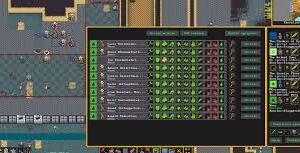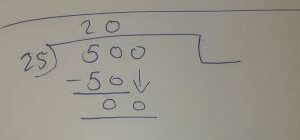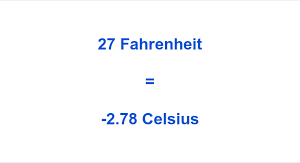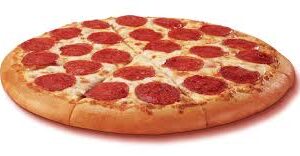Welcome 8 teaspoons to tablespoons to the wonderful world of culinary measurements! Whether you’re a seasoned chef or just beginning your kitchen adventures, understanding the difference between teaspoons and tablespoons is essential. These tiny utensils hold the power to elevate your dishes from ordinary to extraordinary. So, pull up a chair and prepare to dive into the fascinating realm of 8 teaspoons to tablespoons!
In this blog post, we’ll not only unravel the mystery behind teaspoons and tablespoons but also explore their importance in cooking. We’ll equip you with handy conversion charts, expert tips for accurate measuring, and even guide you on converting recipes with different measurement units.
So, whether you’re whipping up a delectable dessert or adding that perfect pinch of spice to your savory masterpiece, join us as we delve into all things teaspoons and tablespoons. Let’s get started!
Understanding the Conversion: How Many Teaspoons in a Tablespoon?
Understanding the Conversion: How Many Teaspoons in a Tablespoon?
For those new to cooking or baking, understanding measurements can be quite confusing. One common question that often arises is how many teaspoons are there in a tablespoon? Well, fear not! I’m here to break it down for you.
In simple terms, there are 3 teaspoons in a tablespoon. This conversion might seem odd at first, but once you get the hang of it, measuring ingredients will become second nature.
Teaspoons and tablespoons are both used as units of volume measurement in recipes. Teaspoons are smaller than tablespoons and are commonly used for smaller amounts such as spices or flavorings. On the other hand, tablespoons are larger and typically used for ingredients like oil or butter.
Knowing this conversion is crucial when following recipes accurately. Imagine adding too much salt because you mistakenly thought one teaspoon was equal to one tablespoon! Yikes!
To make things easier for you, here’s a handy conversion chart:
1 teaspoon = 1/3 tablespoon
2 teaspoons = 2/3 tablespoon
3 teaspoons = 1 tablespoon
Measuring accurately is essential for successful cooking and baking endeavors. To ensure precise measurements with teaspoons and tablespoons, use level measurements rather than heaping spoonfuls. A slight variation can greatly affect the outcome of your dish.
When converting recipes that use different measurement units such as grams or milliliters to teaspoons and tablespoons, it’s important to do some research beforehand or consult online resources that provide accurate conversions.
So now that you understand how many teaspoons are in a tablespoon, go forth with confidence into your culinary adventures! Happy cooking and baking!
Why Do We Use Teaspoons and Tablespoons?
Teaspoons and tablespoons are essential tools in the kitchen, serving a specific purpose in cooking and baking. But have you ever wondered why we use these particular measurements? Let’s explore the reasons behind their usage.
One reason is convenience. Teaspoons and tablespoons provide a standardized way of measuring ingredients accurately without the need for precision scales. They offer a practical solution, especially when dealing with small quantities or quick measurements on-the-go.
Another factor is familiarity. Many recipes, both old and new, utilize teaspoons and tablespoons as units of measurement. Using these familiar tools allows for easy understanding and replicating of recipes across different households.
Furthermore, teaspoons and tablespoons offer versatility. Their size allows for precise control over adding flavorings like spices or extracts to dishes or beverages. Additionally, they can be used interchangeably in certain cases where slight variations won’t affect the outcome significantly.
Moreover, using teaspoons and tablespoons promotes consistency in recipe development and sharing. By using standardized measurements that most cooks are familiar with worldwide, it becomes easier to communicate instructions clearly without any confusion or ambiguity.
The utilization of teaspoons and tablespoons has become ingrained in our culinary practices due to their convenience, familiarity, versatility, consistency benefits they bring to cooking and baking endeavors
Common Cooking Measurements Using Teaspoons and Tablespoons
When it comes to cooking, accurate measurements are key to achieving the perfect balance of flavors in your dishes. Teaspoons and tablespoons are common units of measurement used in many recipes, especially when it comes to adding spices, herbs, or liquids.
Teaspoons are typically used for smaller quantities, while tablespoons are used for larger amounts. For example, a teaspoon is often the perfect amount for adding a pinch of salt or a dash of vanilla extract. On the other hand, tablespoons are commonly used for measuring ingredients like oil or flour.
Understanding how many teaspoons are in a tablespoon is essential for precise measurements. There are three teaspoons in one tablespoon. This means that if your recipe calls for two tablespoons of sugar and you only have measuring spoons available, you can simply use six teaspoons instead.
Knowing these conversions can help you follow recipes accurately and avoid any mishaps while cooking. It’s also helpful when adjusting recipes to suit your taste preferences or serving sizes.
Here’s a handy conversion chart to help you quickly convert between teaspoons and tablespoons:
1 teaspoon = 1/3 tablespoon
2 teaspoons = 2/3 tablespoon
3 teaspoons = 1 tablespoon
To measure accurately with teaspoons and tablespoons, make sure to level off each spoonful by scraping the excess off with the back of a knife or finger. This ensures that you’re using the exact amount specified in the recipe.
If you come across a recipe that uses different measurement units such as cups or ounces, don’t worry! There are plenty of online conversion tools available that can help you easily convert those measurements into teaspoons and tablespoons.
In conclusion,
Understanding how to use both teaspoons and tablespoons correctly is essential for successful cooking experiences. By mastering these common cooking measurements, you’ll be able to add just the right amount of ingredients to your culinary creations every time! Happy cooking!
Conversion Chart for Teaspoons to Tablespoons
Conversion Chart for Teaspoons to Tablespoons
If you’re a cooking enthusiast like me, then you know how important it is to have accurate measurements in your recipes. And when it comes to smaller quantities, teaspoons and tablespoons are the go-to units. But what happens when a recipe calls for 8 teaspoons and you only have a tablespoon on hand? No worries! That’s where a conversion chart comes in handy.
A conversion chart helps you easily convert teaspoons into tablespoons (and vice versa) without any guesswork. With just a quick glance, you can determine the exact measurement needed for your recipe. For example, did you know that 8 teaspoons are equal to 2 tablespoons? Now you do!
Having a conversion chart at your fingertips saves time and ensures that your dishes turn out perfectly every time. It takes away the stress of trying to figure out measurements on the spot and allows you to focus on creating delicious meals.
So next time you find yourself needing to convert between teaspoons and tablespoons, refer to a reliable conversion chart. It’s an essential tool for any kitchen and will make your cooking adventures even more enjoyable!
How to Measure Accurately with Teaspoons and Tablespoons
When it comes to measuring ingredients in the kitchen, accuracy is key. Whether you’re a seasoned chef or just starting out, knowing how to measure accurately with teaspoons and tablespoons can make all the difference in your recipes.
It’s important to note that not all teaspoons and tablespoons are created equal. In some countries, a teaspoon may be 5 milliliters while in others it could be 4.93 milliliters. Similarly, a tablespoon can vary from country to country as well. So when following a recipe from another region, it’s always best to double check the measurements.
To ensure accurate measurement with teaspoons and tablespoons, there are a few tips and tricks you can employ. Start by using level measurements rather than heaping spoonfuls which can throw off your quantities. Use the back of a knife or straight-edge spatula to scrape away any excess ingredient for precise amounts.
Another helpful tip is to hold your spoon or tablespoon over the container you’re measuring into so that any spillage falls right back into the bowl rather than making its way onto your countertop.
Remember that liquids should be measured at eye level for accuracy- this means holding the spoon or tablespoon at eye-level when filling it up so you get an accurate amount every time.
By following these simple guidelines, you’ll become an expert at measuring accurately with teaspoons and tablespoons in no time!
Tips for Converting Recipes with Different Measurement Units
Tips for Converting Recipes with Different Measurement Units:
1. Understand the measurement equivalents: Before you start converting a recipe, familiarize yourself with the conversion ratios between different units of measurement. For example, 1 tablespoon is equal to 3 teaspoons. Knowing these equivalents will make your conversions much easier.
2. Use a kitchen scale: If you want to be precise in your measurements, using a kitchen scale can be incredibly helpful. This allows you to convert weight-based measurements accurately, regardless of the unit used in the original recipe.
3. Consult conversion charts: Keep handy conversion charts that show common conversions from teaspoons to tablespoons and vice versa, as well as other common cooking measurements like cups and ounces. These charts can save time and ensure accuracy when converting recipes.
4. Double-check your calculations: It’s always important to double-check your math when converting recipes with different measurement units. One small mistake could throw off the entire dish! Take an extra moment to verify that your conversions are correct before proceeding.
5. Adjust flavors accordingly: When adjusting recipes based on converted measurements, consider how it may impact flavors and textures. For example, if a recipe calls for 2 tablespoons of sugar but you only have teaspoons available, keep in mind that using less sugar might affect sweetness levels in the final result.
6.
Explore online resources or apps: There are numerous online resources and mobile applications available specifically designed for recipe conversions across various measurement units. These tools can simplify the process by providing instant and accurate conversions at your fingertips.
By keeping these tips in mind while converting recipes with different measurement units, you’ll be able to confidently adapt any dish without sacrificing taste or consistency!
Conclusion
Conclusion
Understanding the conversion between teaspoons and tablespoons is essential for any aspiring cook or seasoned chef. By knowing how many teaspoons are in a tablespoon, you can accurately measure ingredients and follow recipes with ease.
Teaspoons and tablespoons play a crucial role in cooking measurements, allowing us to add 8 teaspoons to tablespoons the perfect amount of flavor to our dishes. Whether it’s a pinch of salt, a spoonful of sugar, or a dash of spice, these measurements ensure that our culinary creations are perfectly balanced.
To convert teaspoons to tablespoons and vice versa, you can refer to the handy conversion 8 teaspoons to tablespoons chart provided earlier in this article. This will save you time and effort when adjusting recipes or trying out new dishes.
When it comes to measuring accurately with teaspoons and tablespoons, remember to 8 teaspoons to tablespoons level off your ingredients for precise results. Use the back of a knife or straight edge to remove excess from the top of your measuring spoon, ensuring an accurate measurement every time.
If you come across recipes that use different measurement units like cups or milliliters instead of teaspoons and tablespoons, don’t worry! There are plenty of online resources available 8 teaspoons to tablespoons that provide easy-to-use conversion calculators. Simply enter the desired quantity in one unit and let them do the math for you.
In conclusion (without using “in conclusion”), understanding how many teaspoons are in a 8 teaspoons to tablespoons tablespoon is crucial knowledge for any cook or baker. It allows for accurate measurements while adding flavor profiles that elevate your culinary creations. So go ahead – grab those spoons and start experimenting with confidence! Happy cooking!










